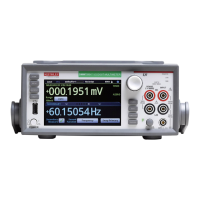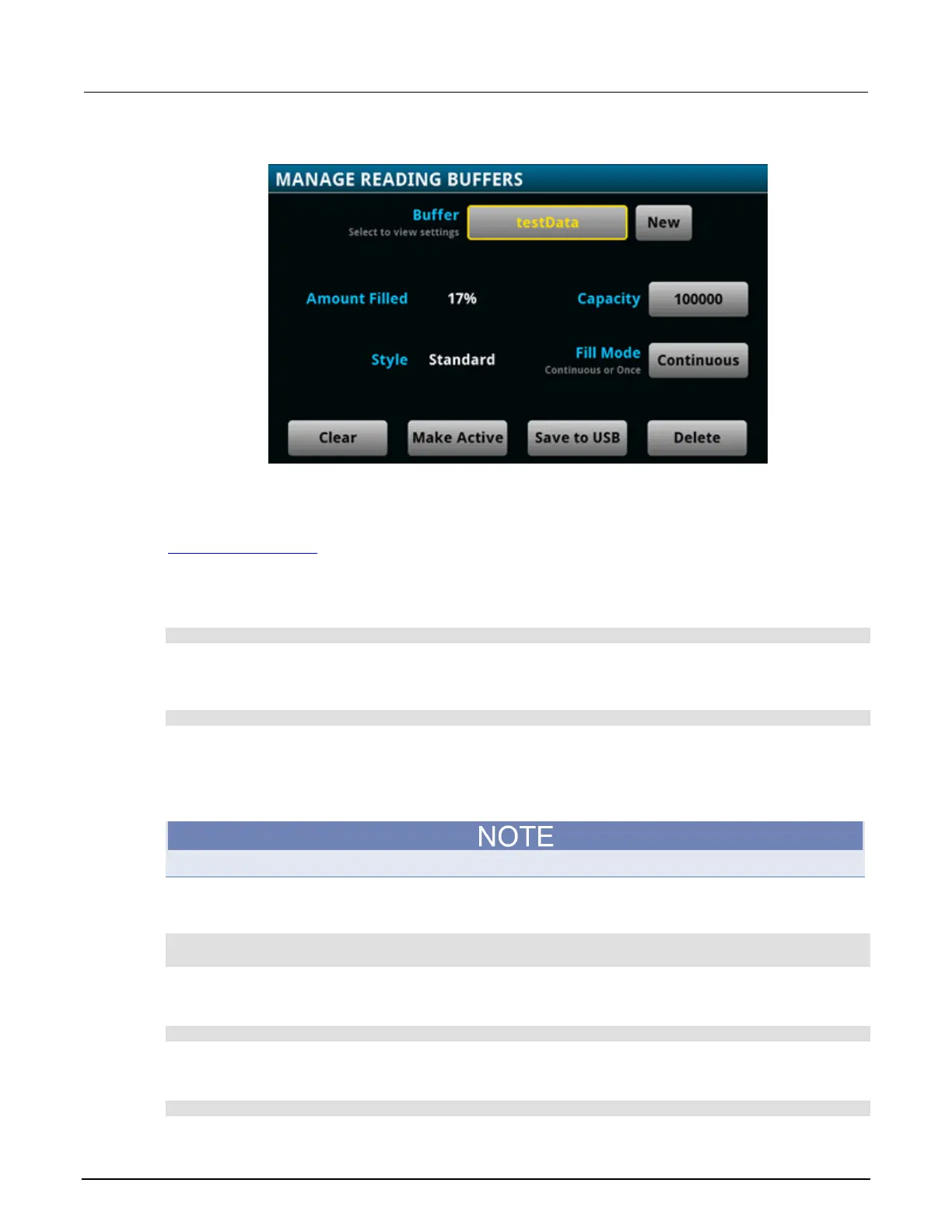3: Functions and features Model DMM7510 7½ Digit Graphical Sampling Multimeter Reference
3-24 DMM7510-901-01 Rev. B / May 2015
Figure 114: Settings for reading buffer screen
4. Select the Make Active button. The "Are you sure" dialog box is displayed.
5. Select Yes.
You can also select reading buffers from the active buffer indicator on the Home screen. Refer to
Active buffer indicator (on page 2-14
) for information about using the indicator to select buffers.
Using SCPI commands to select a reading buffer:
To make a measurement and store the readings in a specific reading buffer, send the command:
:READ? "<bufferName>"
If you do not specify a buffer name, readings are stored in defbuffer1.
An alternative to sending the :READ? "<bufferName>" command is to send the command:
:TRACe:TRIGger "<bufferName>"
The :TRACe:TRIGger command stores readings in the specified reading buffer. If no buffer is
specified for the parameter, defbuffer1 is used. To see the readings stored in the buffer after using
this command, use the :FETCh? command to see the last reading stored in the buffer or the
:TRACe:DATA? command to see multiple readings from the buffer.
To specify a user-defined reading buffer, you must create the buffer first.
To select current as the measurement function, measure current, and return the readings in the
testData reading buffer, send the following commands:
:SENSe:FUNCtion "CURRent"
:READ? "testData"
To measure current and store the readings in the defbuffer2 reading buffer, send the following
command:
:MEASure:CURRent? "defbuffer2"
To measure voltage and store the readings in the defbuffer2 reading buffer, send the following
command:
:MEASure:VOLTage? "defbuffer2"

